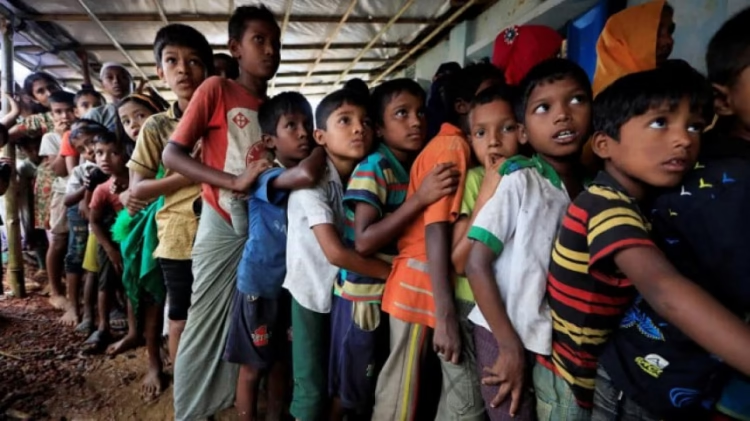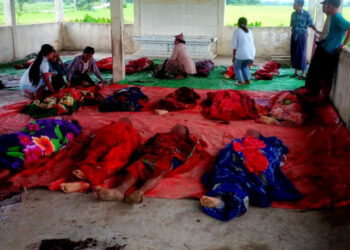More than 400,000 Rohingya children now face uncertainty over schooling, as around 6,400 NGO-run informal schools at refugee camps in Cox’s Bazar have either suspended classes or drastically reduced class hours due to a fund crunch.
UNICEF and Save the Children, which supervise the informal schools known as learning centres, on June 3 suspended classes for students from kindergarten to class-4. The decision came after hundreds of teachers protested the dismissal of 1,100 colleagues amid aid cuts affecting over a million refugees in Cox’s Bazar.
Of the 8,000 teachers employed at the centres, 3,900 were Bangladeshi nationals and the rest Rohingyas.
According to the UN Office for the Coordination of Humanitarian Affairs, $72 million is required to cover educational expenses this year, but less than $10 million has been received. The total budget requirement is $934 million for around 1.5 million people — 1.2 million Rohingyas and 300,000 members of the host community. Of the amount, $303 million (32 percent) was secured as of July 12.
The funding shortfall stems largely from a drastic reduction in humanitarian aid by the US, which provided over half of the total funding for Rohingyas over the last few years.
Ehsan Ullah, a Rohingya teacher at Kutupalong refugee camp, said that though classes for kindergarten to class-4 remain suspended, students in class-5 to 7 receive lessons four days a month and those in class-8 to 10 five days a week.
He pointed out that the majority of children are enrolled in grades below class-6.
The teachers have called for the reinstatement of their dismissed colleagues, proposing that the authorities reduce lesson hours instead of suspending classes.
“UNICEF will decide on the teachers’ proposal within a month. We will have to wait until August for the decision,” Cox’s Bazar Deputy Commissioner Mohammad Salahuddin said, referring to a stakeholders’ meeting at his office on July 3.
Expressing frustration at the suspension of classes, Rohingya leaders said many of their children are being robbed of their dreams.
Saiful, a community leader who preferred to use only one name, said the community has endured decades of persecution in Myanmar that denied them citizenship, leaving many without hope.
“Some of us still seek to build the capacity to support and lead the community, but that dream now seems increasingly out of reach,” he said.
Humanitarian agencies set up the learning centres at the camps following the 2017 Rohingya influx into Bangladesh. The camps also host around 1,000 madrasas and about 200 community-based schools that remain operational.
At the learning centres, students are taught English, and other subjects, including mathematics and science, in the Burmese language. Bangladesh government allowed the centres to introduce the Myanmar school curriculum in 2020.
According to a 2018 report by the Burmese Rohingya Organization UK (BROUK), many Rohingyas in Rakhine state were either denied access to education or received poor-quality schooling.
Prior to the 2012 violence in Rakhine, they could attend government schools with their Rakhine peers and were also eligible to receive higher education at the region’s main university in Sittwe.
However, following a wave of state-organised violence in late 2012, the Myanmar authorities confined many Rohingyas to “open-air prisons”, denying them access to university or completion of education. They were permitted to study only at understaffed and under-resourced schools.
As a consequence, there is a high level of illiteracy among the Rohingyas, with about 73 percent self-identifying as illiterate, the report said.
Nay San Lwin, co-founder of Free Rohingya Coalition, said the 47 Rohingya students who had been admitted to Yangon University were barred from continuing their education after the 2021 military coup.
“In reality, no Rohingya students are currently allowed to study at the university… Without good education, they risk becoming a lost generation,” he added.




















